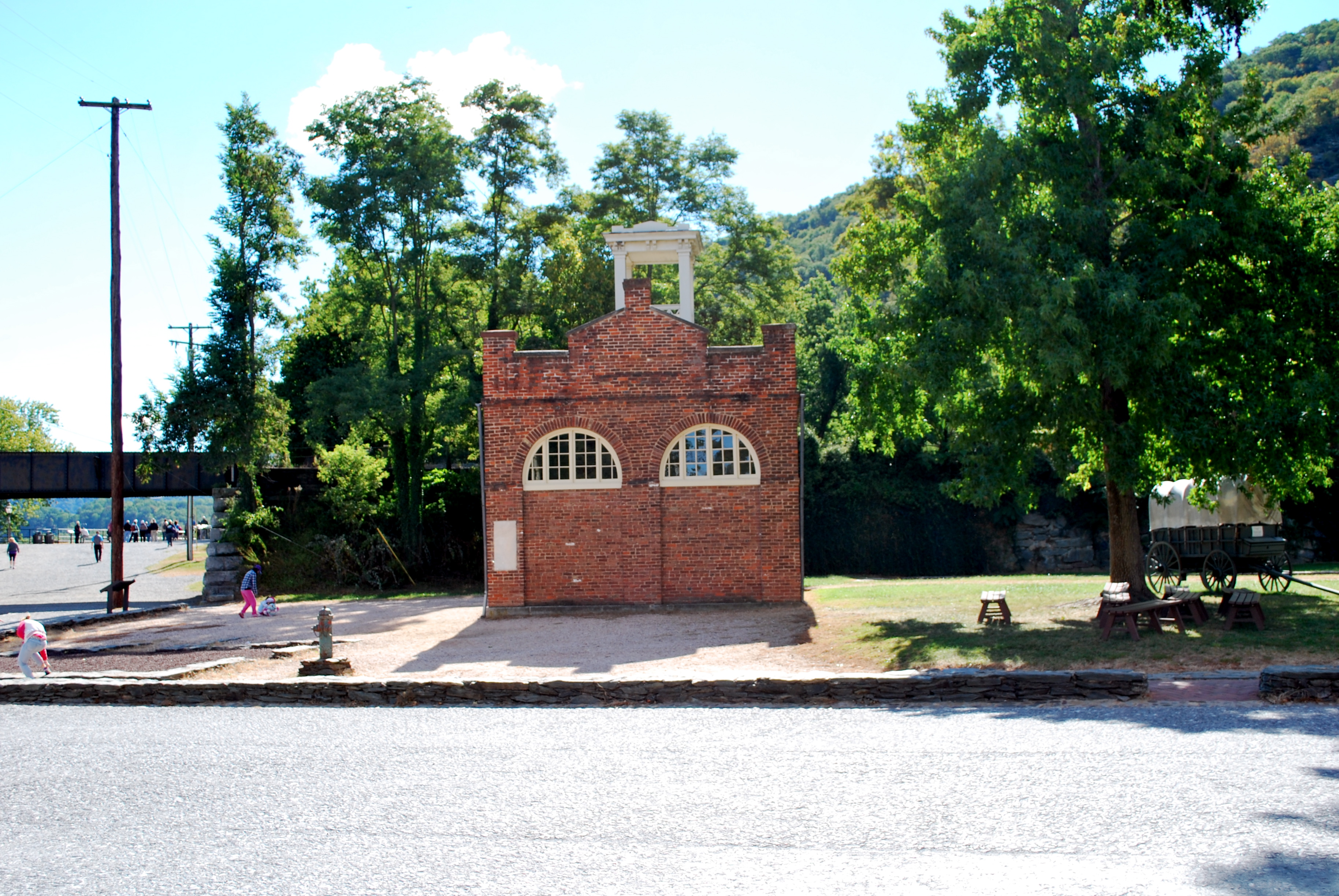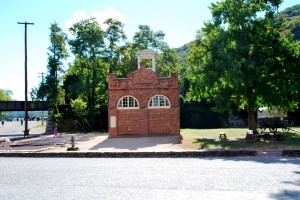John Brown’s Fort was originally constructed for use as a guard and fire engine house for the federal Harpers Ferry Armory in Harpers Ferry, West Virginia (back then it was a part of Virginia). The original building was described in a military report as one story brick use as an engine and guard house covered with slate and copper gutters. The building because famous during the raid on the Harpers Ferry Armory in 1859 when John Brown turned it to a fortification during the revolt.
John Brown planned to capture the armory and use them to supply an army of abolitionists and run-away slave guerrillas. The raid began the night of October 16, when Brown and his army of 21 men (16 white and 5 black) initially manage to capture the armory and succeeded in taking 60 citizens of Harper’s Ferry hostage. However, John Brown’s plan failed because it relied on local slaves joining the insurrection, but none of the slaves joined the rebellion. The local militia and armed townspeople killed several members of the insurrection and forced Brown to take up position in the fire engine house where Brown’s men had placed several of the hostages and prepared a defensive fortification. On the night of October 17, U.S. marines and then Brevet Colonel Robert E. Lee and his aide J.E.B. Stuart arrived in Harper’s Ferry to put down Brown’s insurrection. Using a ladder as a battering ram the next morning, the marines battered down the door and stormed the fire engine house. One marine was mortally wounded in the attack as well as several of Brown’s men. Most of John Brown’s men were captured, including Brown who was stabbed by the Marine commander, Lt. Green. T Fort being relocated in 1968
After Brown’s raid, the fire engine house became known as “John Brown’s Fort” and attracted tourist attention. In 1891, the building was sold to a buyer who wished to use it as an attraction close to the World’s Columbian Exposition in Chicago. The building only had 11 visitors and was dismantled and left on a vacant lot after the exhibition. In 1894, a movement was spearheaded by Washington D.C. journalist Kate Field to preserve the building and move it back to Harper’s Ferry. Alexander and Mary Murphy deeded 5 acres of their Harpers Ferry farm for one dollar as a relocation site, and the Baltimore and Ohio Railroad provided free shipping.
John Brown’s Fort was reconstructed on the Murphy Farm including the gates that surrounded the fort designed by George Washington in November 1985. In August 17, 1906, Murphy allowed over one hundred prominent African-American men and woman to walk past their farm house to the back field to pay homage to John Brown where the fort had been located. WEB DuBois, Lewis Douglas, WT Greener, and others took their shoes and socks off as walking on holy ground. This day is noted as the John Brown Day written by Benjamin Quarles, Allies for Freedom.
Storer College bought John Brown’s Fort from Alexander Murphy in 1909 for $900.00 and moved it to the college’s campus. In 1960, the National Park Service acquired the building and moved it once more to a location close to its original site in 1968. The original locaiton has been covered by a railroad embankment in 1894. The Fort is now part of the Harpers Ferry National Historical Park run by the NPS and sits 150 feet from its original location.
The fort structure is not “fully authentic” due to the number of times it has been dismantled and reassembled. Each time its moved, there was a potential loss of original building material. It is also not an exact replica, as portions of the building were reconstructed backwards. The National Park Service purchased the Murphy farm through Trust for Public Land Program in December 31, 2002.


